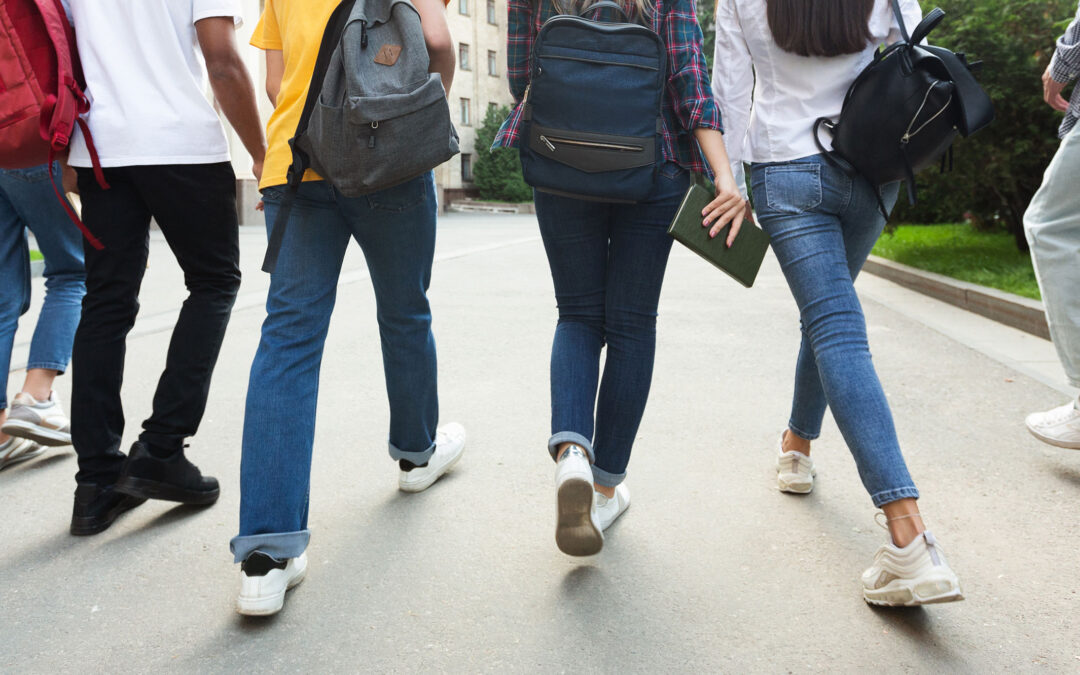The Wellness & Prevention Center has been supporting young people and their families as they return back to school for seven years, and there are some common concerns that we hear from teens and families each year. Typically, the biggest stressor at the beginning of the new school year is shifting a student’s sleep schedule. Additionally, we often have families and young people reach out when they are transitioning from elementary to middle school and middle school to high school. Following are some tips to help navigate these two issues.
Adjusting sleep schedules:
- Ideally, families should work on this shift about two weeks prior to the start of school – this is hard, summer is fun!
- Adults and youth body clocks rely on consistent sleep schedules – as hard as this might be – young people should try and keep a consistent bedtime and routine through the weekends.
- It is hard for our body clocks to make a big shift – i.e., moving from going to bed after midnight to closer to 10PM – sleep experts recommend trying to adjust in 15-30 minute increments.
- Limiting caffeine in the afternoons is important to a good night’s sleep (many soft drinks have a lot of caffeine).
- Limited screen time before bed – experts recommend avoiding computers, smartphones, and other blue light-emitting devices an hour before bedtime.
School transitions:
- The most difficult transition for most young people is from elementary to middle school.
- If your child is having a rough time, reach out to their school counselor, they are very skilled at helping students adjust.
- If your new middle or high schooler is having difficulty with the classwork or homework, school staff can help and evaluate if the course load is the correct match for your child.
- Chris Carter, San Clemente High School principal, notes, “Students have six weeks to level down an accelerated class for a better chance to learn the material successfully. If students have an extra class they do not need for graduation, they may drop that class within the first six weeks as well.”
- While grades and homework are an important measure of how your child is doing in school, take care not to use tools like Canva daily to check in. Some teachers do not update this daily and your child does not want to be asked daily. Middle and high school students need to learn to self-manage their work and their teachers can help them with that.
- Pay attention to your child’s mental wellbeing – a good way to ask about the school day is the Rose, Thorn, and Bud technique. The rose is something that went well. The thorn is something that was difficult. The bud is something they are looking forward to or might be working on.
- Just listen to their responses and do not try to fix the difficult situation. Inquire what they might think will make things better or easier. Most young people just want to talk it through and will develop a solution on their own.
- If you note any shift in behavior, change in eating or sleeping, withdrawing from friends, loss of interest in things they enjoy, or more extreme emotions, reach out to the Wellness & Prevention Center – 949-649-9460 for support.
The Wellness & Prevention Center supports students through a mental health professional on site and prevention education for students and families at San Clemente High School, San Juan Hills High School, Aliso Niguel High School, Shorecliffs Middle School, Marco Forster Middle School, Bernice Ayer Middle School, and at our San Clemente Community Clinic. All of our services are grant and donation supported. Please visit our website wpc-oc.org to learn more about how you can support your child’s wellbeing and for how to contact us if you have any questions or concerns about your child’s mental health. Consider making a donation to support our services on our website.

